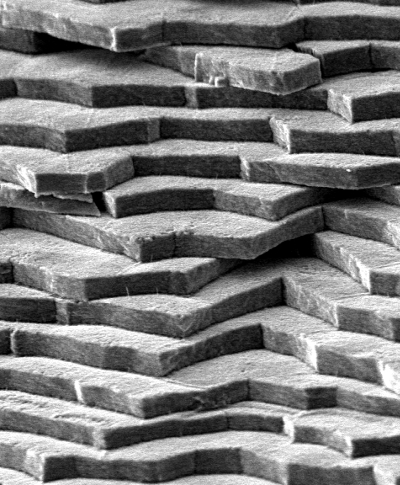Structure strength mapped across scales

A study in the US seeks to help scientists and engineers judge the ultimate strength, stiffness and toughness of composite materials for anything from nanoscale electronics to buildings.
Rice University researchers have created universal maps that predict the properties of natural and biomimetic platelet-matrix composites (like mother-of-pearl) and synthetic stacks (or heterostructures) of materials like graphene and boron nitride.
The team says its computer-drawn maps are “dimensionless” and their findings will work as well for materials built with nanoscale blocks as they would for a brick wall, or bigger.
The formula relies on four characteristics of the individual materials under consideration for a composite: their length, a ratio based on their respective stiffness, their plasticity and how they overlap.
Those are the inputs, said Sakhavand, a Rice graduate student who worked on the project.
“If you know them, you can predict the stiffness, strength and toughness of the final composite. We call this a universal map because all of those input parameters are relevant to all composites and their structural properties,” he said.
The study began following one engineer’s interest in the architecture of mother-of-pearl.
The naturally-formed material maximises both strength and toughness, which as typically mutually exclusive properties in engineered materials.
Under a microscope, nacre looks like a well-built brick wall with overlapping platelets of different lengths held together by thin layers of an elastic biopolymer
Sakhavand said the work is an important milestone toward a better ability to decode and replicate mother-of-pearl’s architecture for lightweight, high-performance composites.
These could benefit the aerospace, auto and construction industries.
The Rice researchers' work spanned three years of calculation and experimentation that involved mapping the properties of natural composites like collagen and spider silk as well as synthetic stacks like hexagonal boron-nitride/graphene and silumin/alumina.
They also tested their theory on macro-scale, 3-D printed composites of hard plastic and soft rubber that mimicked the properties they observed in nacre.
A video about the project is accessible below.








 Print
Print